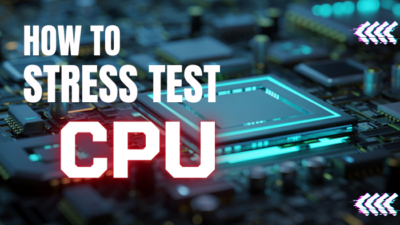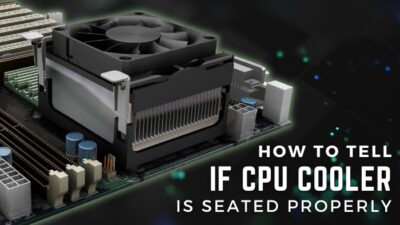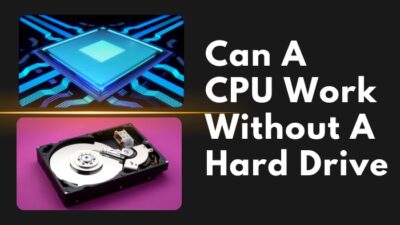An unexpected shutdown might irritate you while you’re in the middle of work. But it will give you a cold sweat if the PC doesn’t start after a sudden shutdown.
If applying some tweaks can’t bring back the display, it’s possible your CPU might be dead.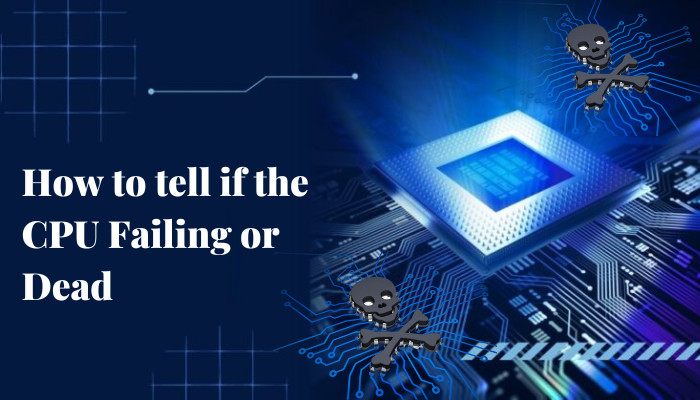 Nevertheless, I’ve seen numerous cases where I found a CPU dead, but most of them weren’t dead CPUs that caused such problems. So, be sure to check if your CPU is actually dead before replacing it.
Nevertheless, I’ve seen numerous cases where I found a CPU dead, but most of them weren’t dead CPUs that caused such problems. So, be sure to check if your CPU is actually dead before replacing it.
In this article, some signs and tests are consulted to be sure if your CPU is dead or failing.
How to be Sure if Your CPU is Dead or Just Failing
Every time your PC shutdown itself or shows BSOD isn’t a CPU damage issue. There could be lots of other reasons that can cause inconvenience. Even though your PC tells you it’s the CPU fault with error codes, it’s not blindly dependable.
If you’re not so sure that you have a damaged Processor, buying another one is a waste of money. Several error signs and checking processes are discussed in this article to make yourself confident about, whether you should go for a new Processor or another component.
Here are the feasible checking methods you may follow to check on your CPU if it’s dead or faulty:
1. No Display issue
One of the first noticeable situations is No Display which is caused if your CPU or Mobo fails to deliver a display signal through VGA, HDMI, DP, or DVI port. RAM & CMOS failure is also responsible for such issues.
So, none can say it occurs on CPU damage only, which is why you have to check on other components before blaming the CPU particularly.
Some CPUs like Intel Core i5-9600K & Ryzen_7-3700X processors don’t deliver display signals and depend on dedicated GPUs for display output. Those processors can’t be judged as dead or faulty if your GPU can’t provide display output. 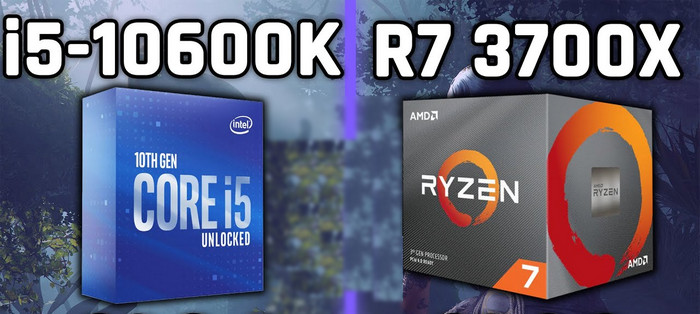
2. Sudden Power Off & System Freeze
Have you counted? How often have you faced a system freeze or sudden shutdown?
“A lot ” if any regular PC users answer such a question.
Therefore, screen freezing or sudden shutdown can be an issue of Operating system failure, Buggy software, Or Overheating.
However, overheating is an issue of CPU, but GPU overheating can also cause sudden screen freezing and system shutdown. Check your Windows OS and installed software before considering your CPU – dead or faulty.
3. Bent CPU Pins
Unlike Intel’s LGA platform, AMD comes with a PGA socket where processors have sensitive pins hooked to motherboards. If you accidentally drop your CPU and the CPU pins are bent, it’s bad for the CPU.
4. BSOD
Blue Screen of Death doesn’t always refer to CPU problems only. Nonetheless, a bad CPU can cause BSOD. It shows specific error codes that refer to both issues with hardware and software/OS. You can easily find some solutions, and the cause behind a blue screen error by scanning the QR code or searching with shown error code.
Although the error code messages aren’t always right, it’s worth a search.
5. Fans Running at Full Speed
CPU fans are the particular fans to cool down processor heat. But if you notice your fan is running at full RPM and being loud when idle but not showing display, there is a chance your CPU is not responding as it should be.
It can be both, either your CPU isn’t responding or your motherboard is unable to read the processor. The fan spins at its top RPM state on such problems. Moreover, GPU failure is also responsible for the Highest RPM fan speed.
6. Use POST Card
If you adopt an interest in checking PC failures, you may own a POST card. Power On Self-Test cards is a useful tool to check specific problems of all components connected to a motherboard.
You can check your CPU status by installing a POST card in a PC’s PCIe slot. If your POST card doesn’t show anything, there is a chance your processor is broken.
7. Check Debug LED & Beeper
Almost all modern motherboards come with Debug LEDs & a 4-pin header labeled as a speaker to install a beeper.
A distinct problem on the PC is shown over those LEDs and beepers to inform users what is going wrong. You can find what sound or light signal means which issue on the motherboard’s user manual. Or you can just google it. But 7-beeps refer to a CPU problem.
8. Re-Install the CPU
Intel’s flat surface CPUs connect to pin-based LGA sockets, the CPU surface must align properly above the socket pins. The Processor can be misplaced or dust can interrupt the connection.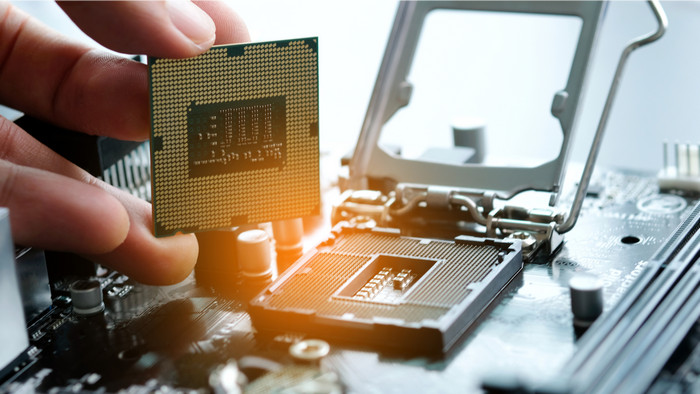 Removing the CPU from the socket and re-installing it after a wash with isopropanol liquid can give you a fruitful result.
Removing the CPU from the socket and re-installing it after a wash with isopropanol liquid can give you a fruitful result.
To get the detailed step-by-step process, go through our complete CPU installation guide.
10. Change PSU
A Power Supply Unit provides various quantities and types of electricity supply like 4V, 5V, 12V, 20V, and so on. The Power supply has to be very specific and accurate for different components and inputs.
If your Power supply is faulty and unable to deliver exact electricity, then the components can’t operate accordingly. So, change your PSU to check if it’s the faulty CPU or PSU.
To know what power supplies are the most reliable, check out our PSU tier list.
11. Swap the Motherboard
Motherboards are one of the most defective components, which often break apart. As it’s the junction of all other components, a faulty motherboard may cause inconvenience rather than the CPU.
Change the motherboard to check if motherboard or CPU is bad. In most cases, it will show that your motherboard isn’t reading your CPU and showing it’s the CPU’s fault.
Reasons Why Do CPUs die
Although the CPU is considered a long-lasting component of all PC peripherals, it can die or fail in certain circumstances. Too much use, or too much less use, are both responsible for the damage. Some other issues like overheating, Overclocking can decrease CPUs lifespan.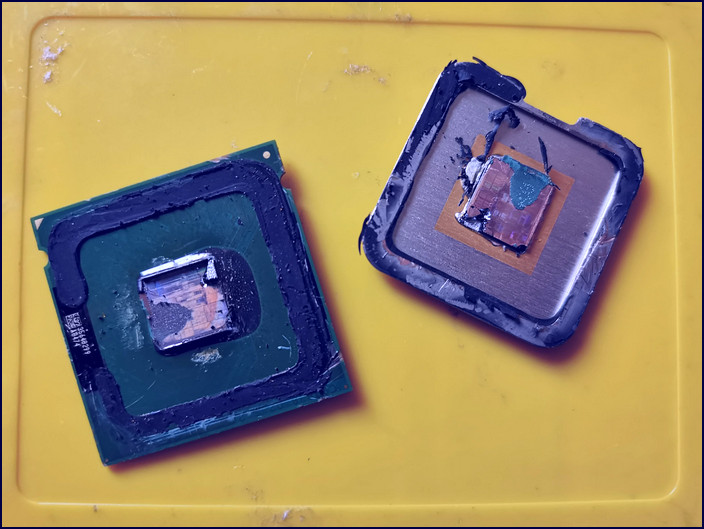 Here are some of the practical reasons that can harm a CPU to death or defective:
Here are some of the practical reasons that can harm a CPU to death or defective:
Aging
Everything weakens over time and the material quality decreases gradually. Even though a processor can survive long, it loses its potential after a long period.
Extensive pressure on CPUs like Video editing, Rendering, and Gaming also cost CPU longevity.
Overheat
Heat is the enemy of electronic components. So, processors are also vulnerable to overheating. Extensive heat can melt the silicon in the CPU and damage it completely.
So, verify whether the CPU is overheating, and you must use a powerful CPU fan if you want to increase the longevity of the processor and squeeze more performance without damaging it.
PSU Fault
Computer Power supplies must be accurate while delivering electricity to all connected components. A faulty PSU can damage any PC peripheral by over-delivering electricity, that’s why users buy at least 80Plus Bronze-rated PSUs.
However, most PSUs in the market have safety technology in their units, but nothing is perfect. A simple manufacturing mistake can be deadly to CPUs and users also.
CPU Pin Defect
AMD Ryzen processors have pins beneath to connect to the motherboard. Those are sensitive enough to bend easily. If your CPU pins are bent slightly, you can still replace the CPU pins with specialized equipment and completely fix the bent pins on the CPU & motherboard.
But if the pins are broken, you are out of options.
Fungus attack
The areas where humidity is high, and an unused laptop CPU is easily vulnerable to the fungus attack.
If you don’t use your Laptop for quite a long time, there is a high chance your laptop’s CPU is attacked by fungus. However, Desktop CPUs are not usually affected by fungus.
Static Charge
The areas like Utah have so much less humidity and high static electricity, that can be harmful to a CPU.
Most of the PC parts come with an antistatic package to prevent static electricity damage. It may sound weird, but it happens in some places where the air is dry like America has to face such issues.
How to Fix Your Faulty CPU?
A processor is too complicated to fix by a regular human being with the usual tools. It’s sadly true that you can’t fix a CPU if it’s dead already. But if your CPU is simply failing to perform accordingly, you can fix it in some ways. Some small tweaks and a little effort can bring your CPU into a usable state.
But if your CPU is simply failing to perform accordingly, you can fix it in some ways. Some small tweaks and a little effort can bring your CPU into a usable state.
Here are some fixes you can try to fix filed CPUs to run as a new one:
Re-apply Thermal paste
The CPU heat spreader must attach to the heatsink without keeping any gaps in between those surfaces. To ensure no gaps exist even on a molecular scale, a thermal paste is applied.
If the thermal paste dries up, it doesn’t work as it should. This might cause overheating, and overheating will force the CPU to fail-safe. Since fail-safe will perform thermal shutdown, you’ll often find your CPU shutting down constantly.
Change to Another Motherboard
All your PC parts run on the motherboard, and if your motherboard fails to read or provide data to the processor, it may show that your processor is faulty.
But it’s the mainboard, that is responsible for an unresponsive system. Faulty motherboards can also cause system crashes and poor performance. So, changing the motherboard also relieves the pain, that you are thinking it’s caused by the CPU.
Disassemble Whole System
The computer is a set of components that run on each other’s dependencies. Hence, It’s not fulfilled until each of the parts is working properly.
Sometimes parts other than the CPU gets displaced or disconnected partially, which causes lots of issues. In those cases, you should disassemble your whole PC and re-install them together after a subtle wash.
Such practice is satisfactory for users who want their system fully functioning without any lag, hiccup, or issues.
Fix by Delidding CPU (if Warranty Period has Ended)
Delidding is a term most average users don’t hear or execute. Your CPU die (Chip) must be connected to the heat spreader to conduct heat, which has liquid thermal in between.
If that thermal liquid dries up and the heat spreader can’t attach directly to the CPU chip, heat will stay in the chip and will damage the CPU.
If you are brave enough to break into your processor and re-apply thermal liquid, you may notice a significant boost on your faulty CPU.
FAQs
How do I check my CPU health?
CoreTemp, AIDA64, and IntelBurn Test are the best CPU Stress test software you can try. Check if your PC breaks down or face thermal issue while testing.
What matters most in a CPU?
The core quantity and clock speed are primary concerns when you’re buying a CPU. But generation is also an important thing to notice.
Can you return a faulty CPU?
Processors usually come with 3 years warranty, So you are lucky if you have the warranty coverage to return a faulty CPU and reclaim a new one.
How long should a CPU last?
Computer processors are the most long-lasting products in the PC market. A well-treated and healthy CPU lasts longer than 5 years.
Do I need a new CPU if I replace my motherboard?
It depends on the motherboard socket you have. If you decide to buy an updated motherboard with the latest chipset, there is a high chance your Mobo has a new LGA/PGA socket. Then you have no choice but to change the CPU also.
Can I change the CPU without reinstalling Windows?
Yes, you can change the CPU without reinstalling Windows, but if you change the CPU to different gen or architecture, reinstalling windows is recommended.
Conclusion
The CPU is a considerably long-lasting part of a PC, but there is a harsh truth called the Silicon lottery that determines the CPU’s power and longevity. All the processors aren’t the same build quality. Some processors come with a faulty chip that can be responsible for certain CPU damage.
But you must check your existing CPU before buying a new one, considering yours is dead. Moreover, you can also fix your faulty CPU and save money.
If anything is bothering you or made you curious, you can always write your query in the comment box below.

